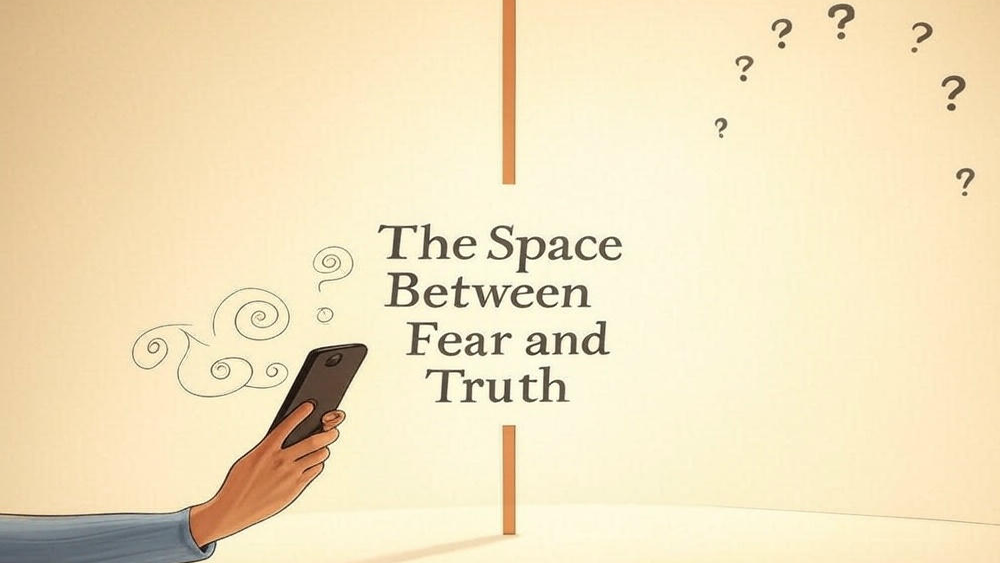Ever notice how your stomach drops when someone takes too long to respond to a text? That sickening lurch when a call goes to voicemail, or when someone’s tone shifts mid-conversation?
That’s not weakness. That’s not you being “too sensitive.”
That’s your brain doing exactly what it was designed to do: predict threats before they happen.
I’ve spent years seeing this pattern unfold, both in myself and in hundreds of clients. The moment uncertainty enters, our brain races to fill the gap. And it rarely fills that gap with sunshine and reassurance.
Instead, it floods the system with worst-case scenarios, memories of past pain, evidence that we’re about to get hurt again.
Our nervous systems don’t deal in facts. They deal in patterns and protection.
When your partner pauses too long before answering “how was your day,” your brain isn’t logically assessing that they might be tired or distracted. It’s scanning for danger patterns because somewhere in your history, pauses meant rejection was coming.
The technical term is “predictive coding.” Your brain isn’t waiting for complete information, it’s making rapid predictions based on fragments, filling in gaps with what it expects to find.
This isn’t pathology.
This is survival architecture.
The Body Remembers What the Mind Tries to Forget
If you’ve experienced relational wounds like betrayal, abandonment, emotional neglect, your nervous system has filed those experiences as threat patterns to watch for.
So when your friend doesn’t text back for hours, your body might mobilize as if you’re being abandoned all over again. Not because you’re “needy,” but because your body is running the same defensive program that once protected you.
Your system doesn’t distinguish between past and present threats. The body remembers, even when your rational mind knows better.
I see this constantly in myself—still scanning texts for hidden meanings, still assuming silence means rejection, still rehearsing conversations that haven’t happened yet. My nervous system trying desperately to control outcomes by preparing for every possible scenario.
Three Ways to Interrupt the Fear Loop
This isn’t about eliminating your nervous system’s protective instincts. It’s about teaching it that not every silence is rejection. Not every pause means danger.
Here are three protocols I use with clients (and myself) to break the cycle:
1. Name the Story
When anxiety hits, stop and ask yourself: “What story am I telling myself right now—and where did I first learn it?”
This creates crucial separation between you and the fear response. Instead of “they hate me,” it becomes “I’m telling myself they hate me because my dad used silence as punishment.”
I’ve watched this single question pull people back from panic attacks. Naming the source of the pattern disrupts its power. The moment you recognize “this is old wiring,” you create space to respond differently.
Try it: Next time your brain fills a gap with fear, write down the story it’s creating, then write down when you first learned that story. Just that awareness creates new neural pathways.
2. Create a Reality Filter
When uncertainty triggers fear, ask yourself: “What’s the most likely, balanced interpretation here?”
Your traumatized brain defaults to catastrophe. This question forces it to consider mundane, non-threatening explanations.
Someone not replying to your text? Instead of assuming they’re angry, consider they might be:
- In a meeting
- Driving
- Dealing with their own life stuff
- Taking a shower
- Simply living their life
This isn’t toxic positivity. It’s reality calibration. Statistically, most silences aren’t about you at all.
Try it: Keep a log of triggering situations and what your brain automatically assumed. Then write down what actually happened. You’ll start seeing how often your fear predictions were wrong.
3. Practice Deliberate Uncertainty
This sounds fucking terrifying, but it works: deliberately create small moments of uncertainty and practice staying present with the discomfort.
- Wait 30 minutes before checking if someone read your message
- Ask a question and sit with the pause before they answer
- Leave a voicemail without asking for immediate callback
The goal isn’t to manufacture anxiety—it’s to teach your nervous system that uncertainty doesn’t automatically equal danger.
With practice, you build tolerance for those in-between spaces where your brain typically inserts worst-case scenarios.
The Space Between Fear and Truth
True peace isn’t found in controlling every variable or preventing every misunderstanding. It’s found in that space between your fear-based story and the truth that’s still unfolding.
Your healing starts when you stop filling every gap with fear and start approaching uncertainty with curiosity instead.
Not every pause means rejection. Not every silence needs decoding. Sometimes, silence is just silence.
Your nervous system learned these fear responses to keep you safe when safety wasn’t guaranteed. But now, those same protective mechanisms might be keeping you locked in patterns that no longer serve you.
The protocols above won’t rewrite your nervous system overnight. But with consistent practice, you’ll start catching yourself before the spiral takes hold. You’ll start questioning the stories your brain offers as facts.
And eventually, you’ll find yourself standing in uncertainty without automatically reaching for the knife of your own destruction, naked in the elements of your own existence, finally free of the ghosts that never existed outside your mind in the first place.
Stay safe.
And don’t forget to be awesome.







